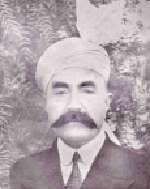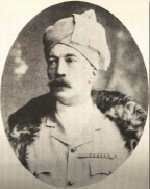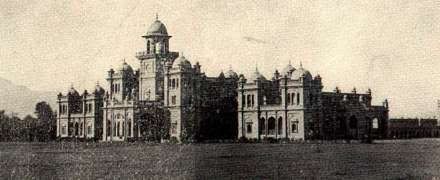
 In an earlier post I had described the different Pugrees worn across Pakistan, including the famed and flamboyant Peshawari Patkaiy or Kullah. There is an interesting story passed down by generations of students of Islamia College Peshwar about how this particular turban, once part of the prescribed college uniform, was abandoned by the College.
In an earlier post I had described the different Pugrees worn across Pakistan, including the famed and flamboyant Peshawari Patkaiy or Kullah. There is an interesting story passed down by generations of students of Islamia College Peshwar about how this particular turban, once part of the prescribed college uniform, was abandoned by the College.
As a background information I should add here that Islamia College Peshawar (ICP) was founded in 1913 by Sir Sahibzadah Abdul Qayyum, a Pushtun, and Sir George Roos-Keppel, the then British Chief Commissioner of NWFP, who was a virtual Pushtun in that he spoke Pushto fluently and also understood and adopted many of Pushtun customs.
While founding the ICP the two gentlemen tried to model their institution after the Aligarh Muslim College, which was founded 35 years earlier by Sir Syed Ahmed Khan. Following Aligarh’a example they also chose black achkan as part of the uniform for ICP students. To the achkan they added the local turban as head-wear. Both gentlemen, I should add, we proud turban-wearers themselves.
Thus the Peshawar Kullah along with black achkan, white shalwar, and black chaplis/shoes became the uniform of ICP students. However, the turban didn’t last long and was soon discarded. One reason for giving it up was that it didn’t sit too well on mostly 16-17 year olds who were usually too skinny at that age to sport this bulky head-wear. The other reason was more interesting and requires a bit of explanation.
In all the college hostels (there were 7) a bell would ring early in the morning and the students would stream out of their rooms into the hostel’s courtyard and line up, all dressed up in black achkan, white shalwar, black shoes and, of course, the Patkaiy or turban. First there would be a roll call to ensure that everyone was present, followed by an inspection. The hostel superintendent would pass by each student to see if he was properly dressed, which meant a properly buttoned up achkan, its collar hooked, no azarband hanging loose, the shoes shined and the shamla of the turban flared and proudly standing up.
Ditching the “dress parade” (that is what it was called) or turning up improperly dressed at the parade was considered almost a felony and the culprit was fined. Since boys were and will always be boys, they couldn’t resist pulling pranks on each other. When everyone was rushing out of his room to join the dress parade, one tug at the tail of someone’s turban would unravel the turban and the student would end up missing the parade.
And this happened not too infrequently. As an insurance against such mishaps the students would keep an extra turban ready to wear. If one were pulled apart at the last minute, the ‘victim’ would quickly fetch the other, don it and rush back to join the parade.
But there was not always a happy ending to such episodes. So, legend has it, the college administration mercifully decided to abandon the turban altogether – to the relief of the latter generations including mine.
Mast Qalandar is a proud alumnus of Islamia College Peshawar.Originally published at ATP on December 20, 2006.






















































Ahsan,
What a coincidence! I also stayed at Hardinge hostel. I was there much later, though. Glad to meet another ICP alumnus.
You are right, the name of the hostel is spelled Hardinge but pronounced as Harding. As students we used to wonder at the “e” at the end of the name and would jokingly pronounce it as Hardinj!
Dear Anwar, It is not “Harding” but “Hardinge” with an “e” in the end. I hope MQ will confirm it.
I stayed in this Hostal during 1957-59. I still have a sweet everlasting memory of that period.
MQ very nice post.I have one question probably it would sound silly but I’ll still ask you. Do you know the 100 Rupee has also a symbol like star? Was this merely designed or has some symbolic importance of Pushtun culture related to unknown/lost Jewish heritage.
I read in some books written by Jewish authors claiming that lost Jewish tribes in Pakistan and Afghanistan are Pathans.Ok there are other theories as well from different parts of the world but lets focus on this one.
I may give you quote of an article about a book, which was translated in english by Issachar Katzir, “Lost Tribes from Assyria” by A Avihail and A Brin, 1978. It says,”The Magen David symbol is found in almost every Pathan house on an island in the Pehshauor district. The rich make it of expensive metals, the poor from simple wood. The Magen David can be seen there on towers of schools and on tools and ornaments.” Now you know what was my question about.
Bright and Nostalgic. The name of the poet Mohsin Ahsan should be written as Mohsin Ehsan (alif, He, seen, alif, noon: five letters) and not Ahsan (alif, He, seen, noon : only four letters).
I did not study at Islamia COllege so do not know what it was in its glory days. But I visited it a few years ago and it was in really bad shape. I hope they have upkept the building recently. It would be such a waste of our arcchitectural heritage otherwise.